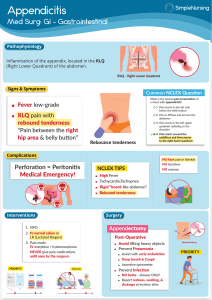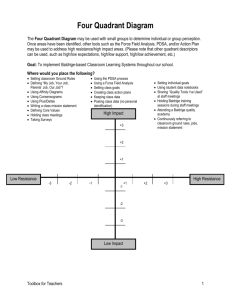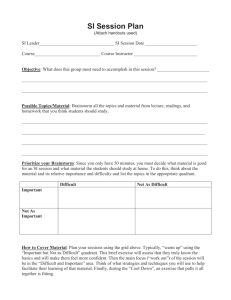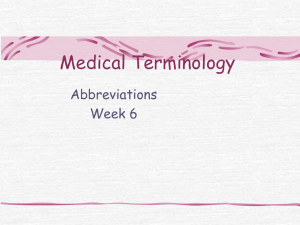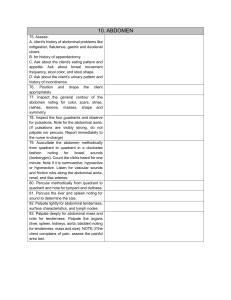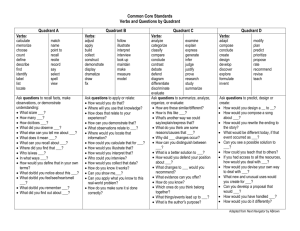Medical Chart Abbreviations - VCC Library
advertisement
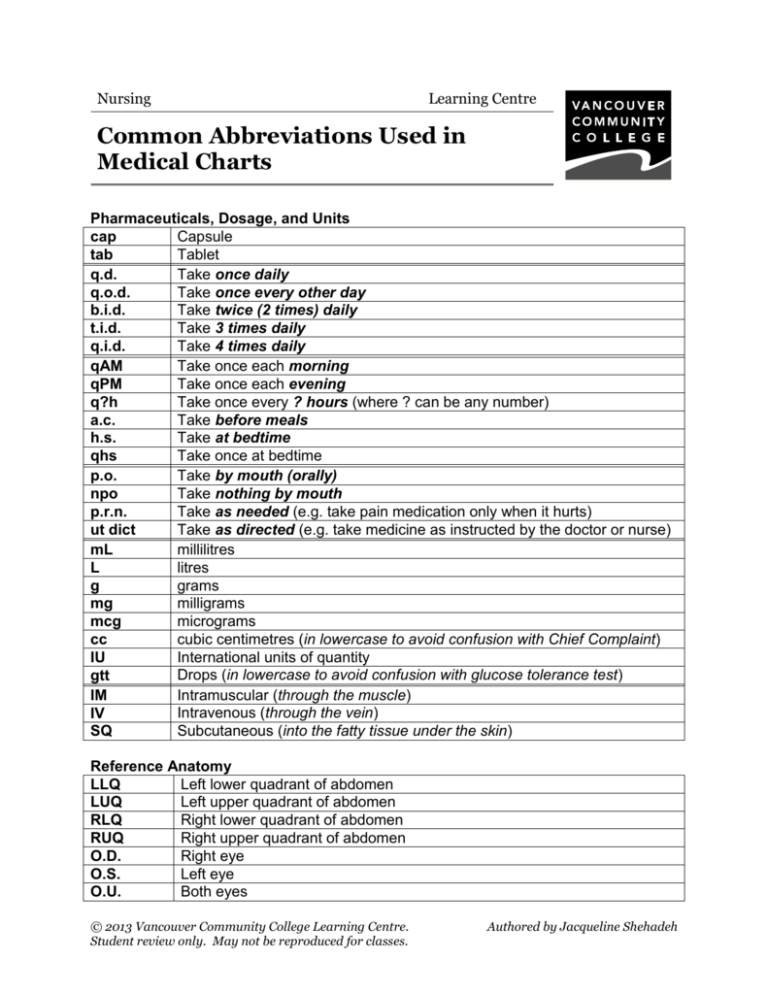
Nursing Learning Centre Common Abbreviations Used in Medical Charts Pharmaceuticals, Dosage, and Units cap Capsule tab Tablet q.d. Take once daily q.o.d. Take once every other day b.i.d. Take twice (2 times) daily t.i.d. Take 3 times daily q.i.d. Take 4 times daily qAM Take once each morning qPM Take once each evening q?h Take once every ? hours (where ? can be any number) a.c. Take before meals h.s. Take at bedtime qhs Take once at bedtime p.o. Take by mouth (orally) npo Take nothing by mouth p.r.n. Take as needed (e.g. take pain medication only when it hurts) ut dict Take as directed (e.g. take medicine as instructed by the doctor or nurse) mL millilitres L litres g grams mg milligrams mcg micrograms cubic centimetres (in lowercase to avoid confusion with Chief Complaint) cc IU International units of quantity Drops (in lowercase to avoid confusion with glucose tolerance test) gtt Intramuscular (through the muscle) IM Intravenous (through the vein) IV Subcutaneous (into the fatty tissue under the skin) SQ Reference Anatomy LLQ Left lower quadrant of abdomen LUQ Left upper quadrant of abdomen RLQ Right lower quadrant of abdomen RUQ Right upper quadrant of abdomen O.D. Right eye O.S. Left eye O.U. Both eyes © 2013 Vancouver Community College Learning Centre. Student review only. May not be reproduced for classes. Authored by Jacqueline Shehadeh Vital Signs BP P T VSS Blood pressure Pulse Temperature Vital signs stable Pulmonary SOB Shortness of breath DOE Dyspnea on exertion (Shortness of breath with activity) Cardiovascular BP Blood pressure BPM Beats per minute CBC Complete blood count DBP Diastolic blood pressure H&H Hemoglobin and hematocrit HR Heart rate HTN Hypertension SBP Systolic blood pressure Urinary Anuric BMP UTI Not producing urine Basal metabolic panel (electrolytes, creatinine, and glucose) Urinary tract infection Dealing with Patients and Diagnosis Ad Lib At liberty (e.g. a patient may move in and out of bed ad lib) C/O Complaint of – the patient's expressed concern CC Chief complaint – the patient's main concern D/C or DC Discontinue or discharge (e.g. D/C drug use) DDX Differential diagnosis – the diagnostic possibilities being considered DNR Do not resuscitate – specific order not to revive a patient artificially FX Fracture H&P History and physical examination H/O or h/o History of – a past event that occurred HA Headache in vitro In the laboratory in vivo In the body N/V Nausea or vomiting PERRLA Pupils equal, round, and reactive to light and accommodation R/O Rule out – used when figuring out the correct diagnosis REB Rebound (e.g. rebound tenderness) S/P Status post (e.g. S/P surgery) Wt Weight © 2013 Vancouver Community College Learning Centre. Student review only. May not be reproduced for classes. 2
